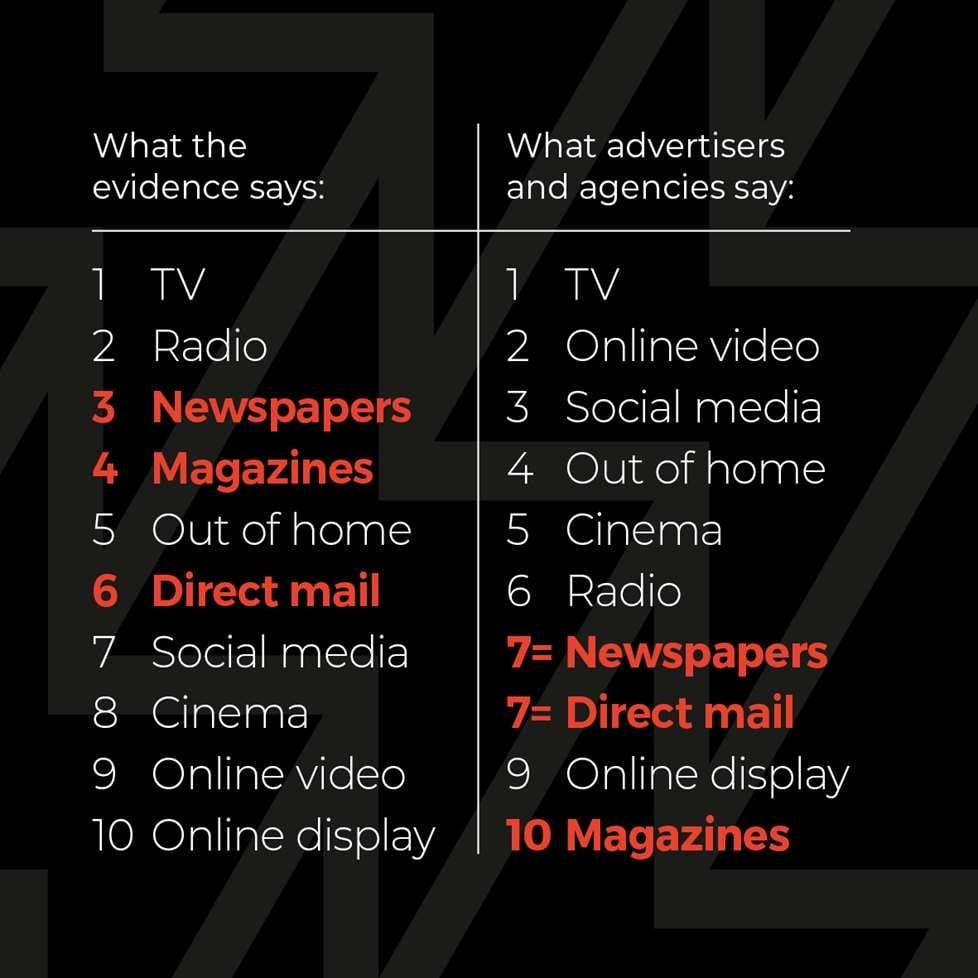Marketing Effectiveness in the Digital Age Part 1
)
It's time advertisers and agencies took a more evidence-based approach to media planning and realised the power of print in the campaign mix.
In a media landscape muddied by unfounded biases, questionable metrics and marketing jargon, the challenge for advertisers and agencies is to cut through the BS and identify which channels legitimately boost marketing effectiveness. It's no easy task in an evolving, expanding and increasingly fragmented marketplace. And doing so asks that marketers leave their preconceptions at the door and consider all channels.
From print to social media, all have strengths and weaknesses. What's important now is that marketers in all their various guises take an evidence-based approach to the increasingly complex business of media planning in the digital age.
The perception/ reality chasm
This issue of media bias was highlighted most starkly in a report penned in 2018 by the Radiocentre and Ebiquity. Titled Re-evaluating Media, the findings, in the words of media commentator Mark Ritson, "laid bare marketers' perceptions about which channels perform best, and the extent to which they're divorced from reality".
Looking at the 10 channels that claw the majority of advertising spend (direct mail, magazines, newspapers, online display, online video, out-of-home, radio, social media and TV), the study first identified the four main drivers for media selection and compared marketing perceptions against actual performance.
The report sheds light on which factors marketers most value (targeting, ROI, emotional response and brand salience), but the results also illuminate whether this love-in with digital and the reticence towards traditional media is grounded in reality. Spoiler: It's not.
Ritson says the conclusions are twofold: "First, a significant number of marketers are not driven by data any more. They look at their own highly unrepresentative media consumption and use that as a proxy for their media planning."
Second, he says, "there is a significant bias within media agencies towards digital media and against so-called traditional alternatives. If you look at the amount of money that can be made in fees and rebates from digital media it is often a factor of three or four times more profitable to recommend digital video over TV or radio."
Clearly the likes of newspapers, magazines and direct mail are dismissed far too easily by marketers, many of whom are suffering from a touch of the shiny things syndrome. Clearly, there is a gulf between perception and reality.
On emotional response metrics, advertisers and agencies ranked magazines, newspaper and direct mail in fifth, eighth and ninth place out of ten respectively, when in reality they number second, fifth and seventh. The same applies to brand salience, where perceptions say fourth, eight and tenth, and the facts say joint second and fifth.
Most worrying of all was that the perception/reality gap was most pronounced when measured against 12 criteria (including the four mentioned above). This "overall weighted score" put magazines, newspapers and direct mail in tenth and joint seventh. While in reality the three channels placed in fourth, third and sixth respectively, beating social (7), online video (9) and online display (10).


This and yet the latter three receive a more generous slice of media spend, with much of it stripped from traditional media.
This article first appeared here. Stay tuned for the rest of this series.
| Tags:Industry News |

)
